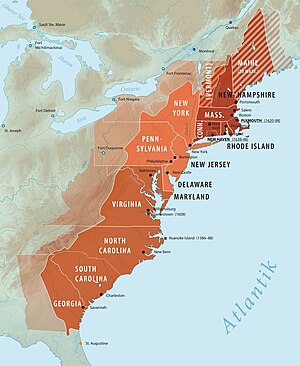Virginia SOL Virginia and US History test: important concepts
Important concepts for the Virginia & US History SOL test
- this page follows the units structure of the actual test
- important concepts and facts are highlighted
- source = SOL Standards and Released tests 2011, 2012, 2014
Early America Through the Founding of the New Nation
Native Americans
- negative impact from European settlements
- disease
- led to decline in population
- disrupted Native American tribes
- loss of land
- pushed westward by colonial settlements and western settlers
- led to reorganization of tribal alliances
- disease
- other impacts
- fur trade with Europeans, especially the French
American Colonies

| Major Region | Sub regions | Colonies |
|---|---|---|
| Middle colonies | Mid-Atlantic | Delaware, New Jersey, Pennsylvania, New York |
| New England colonies | n/a | Connecticut, Massachusetts, New Hampshire, Rhode Island, |
| Southern colonies | Chesapeake | Virginia & Maryland |
| Colonial South | Georgia, Maryland, North Carolina, South Carolina, Virgina |
| Region | Population | Economic | General notes |
|---|---|---|---|
| Middle colonies |
|
|
|
| New England |
|
|
|
| Southern colonies |
|
|
|